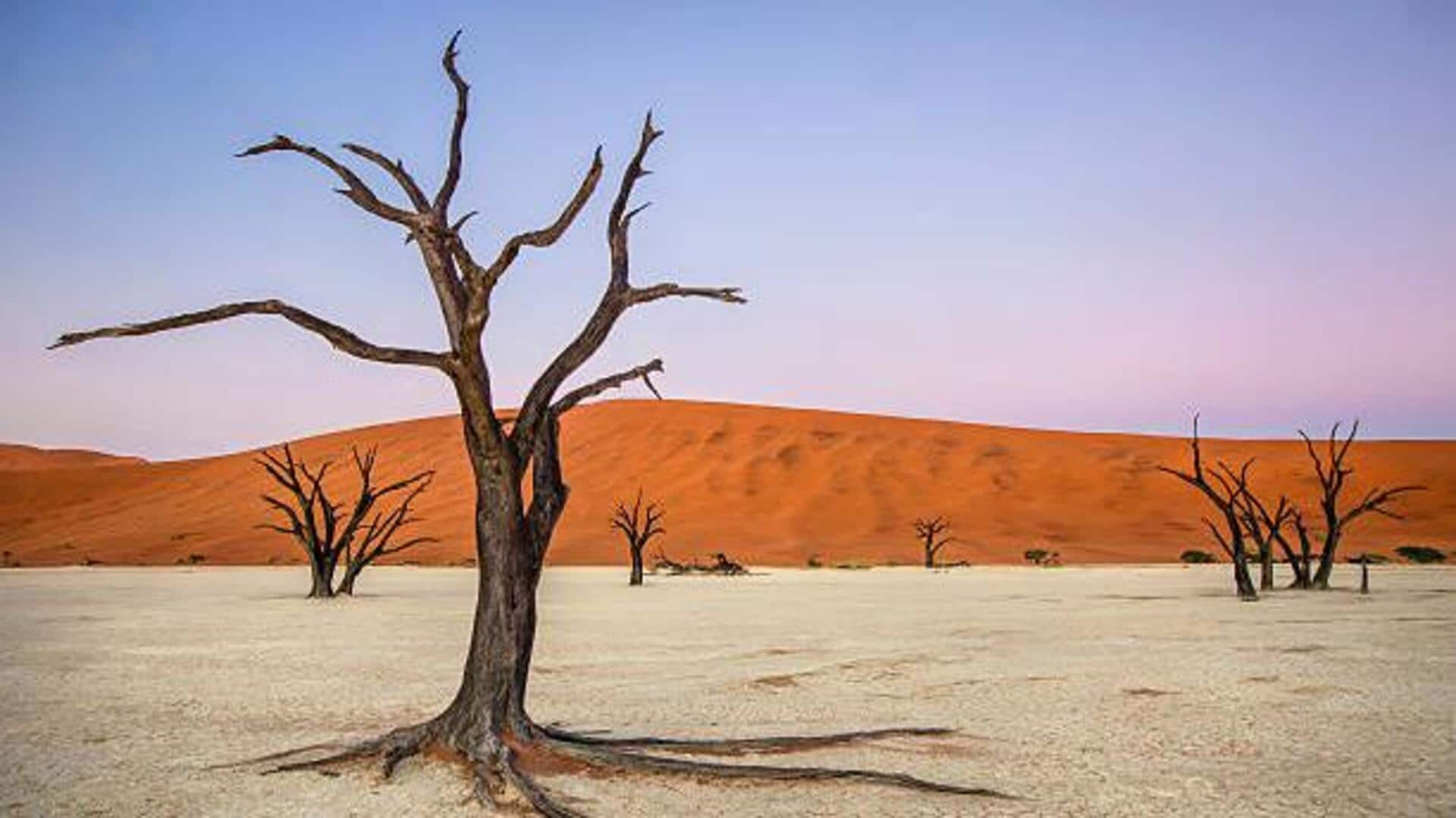
Discovering the petrified forests of Namibia
What's the story
Namibia's northwest holds a secret - the petrified forests, a glimpse into an ancient world where trees turned to stone over millions of years. This starkly beautiful landscape, scattered with fossilized remnants, tells the story of a long-vanished desert oasis. Visitors can discover the fascinating science behind petrification, and walk among relics that bridge the present with the deep past.
History
A journey back in time
At over 280 million years old, the petrified forests originate from the Late Permian period, even before the time dinosaurs roamed the Earth! Petrification happened when these ancient, once-living trees got buried under sediment. Mineral-rich water then permeated, gradually substituting the organic material with silica and ultimately transforming them into stone. This unique landscape holds secrets to our planet's prehistoric ecosystems and climate conditions.
Exploration
Navigating the petrified terrain
Surviving the petrified forest takes more than a pair of flip-flops. Those ancient rocks are rough on the feet! Visitors need to lace up some serious hiking boots to tackle the terrain in comfort and safety. And don't forget to join a guided tour! They'll fill your head with fascinating facts about how the logs turned to stone, and show you the coolest fossils hiding among the jumble.
Scenery
Marvel at nature's artistry
Amid the stark beauty of Namibia's desert landscape, the petrified forest offers a glimpse into Earth's prehistoric past. The stone logs, some reaching an impressive 34 meters in length and two meters in diameter, are scattered across a desolate plain. The intricate preservation of these ancient trees allows visitors to marvel at the rings and bark textures, creating a surreal link to our planet's distant past.
Conservation
Preserving our natural heritage
Keeping this site intact is crucial so future generations can marvel at and learn from it. Local authorities are vigilant in ensuring visitors tread lightly - literally! You're asked to stick to the paths and leave nothing but footprints (and maybe some cool photos on your phone). Feel free to snap pics, but hands off those petrified logs - they're not for climbing or touching.
Tips
Practical tips for your visit
Visiting during the cooler months (May through September) is recommended for a more comfortable experience as temperatures can be quite high during other times of year. Entry fees are minimal ($5 per person) and help support conservation efforts. Remember to bring water, sunscreen, and hats as there is limited shade available on-site.